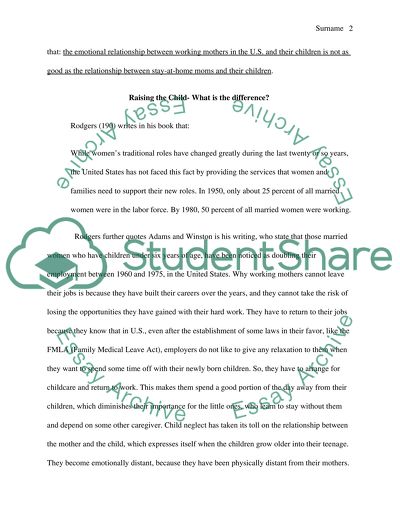Cite this document
(“Deprived Relationship between U.S. Working Mothers and Their Children Research Paper”, n.d.)
Deprived Relationship between U.S. Working Mothers and Their Children Research Paper. Retrieved from https://studentshare.org/english/1449503-working-mothers
Deprived Relationship between U.S. Working Mothers and Their Children Research Paper. Retrieved from https://studentshare.org/english/1449503-working-mothers
(Deprived Relationship Between U.S. Working Mothers and Their Children Research Paper)
Deprived Relationship Between U.S. Working Mothers and Their Children Research Paper. https://studentshare.org/english/1449503-working-mothers.
Deprived Relationship Between U.S. Working Mothers and Their Children Research Paper. https://studentshare.org/english/1449503-working-mothers.
“Deprived Relationship Between U.S. Working Mothers and Their Children Research Paper”, n.d. https://studentshare.org/english/1449503-working-mothers.


